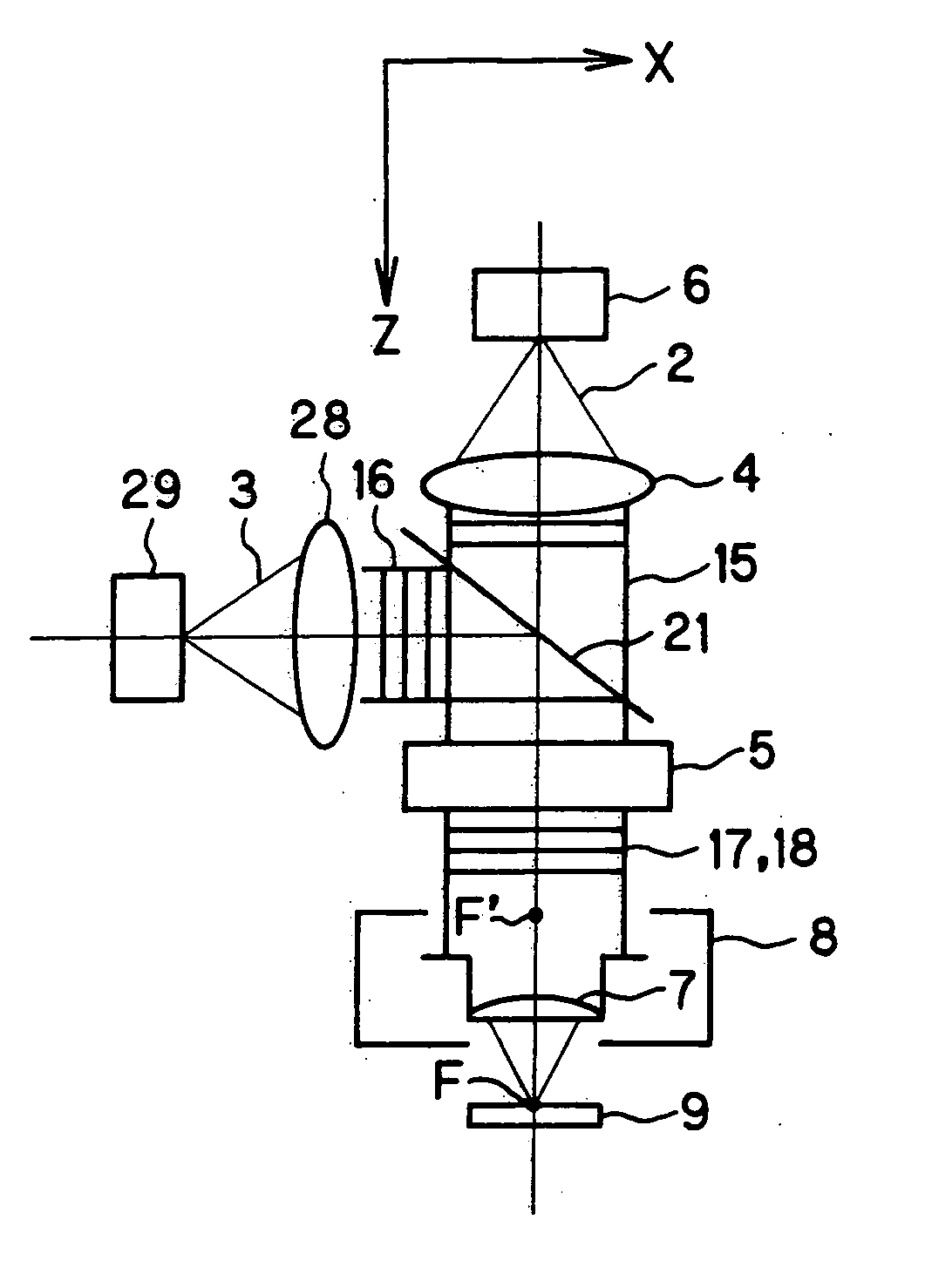Scanning optical microscope
a scanning optical microscope and optical microscope technology, applied in the field of scanning optical microscopes, can solve the problems of difficult to realize positional control with high accuracy and high reproducibility, vibration of the objective adversely affecting the specimen under observation, and achieve the effects of reducing the degradation of off-axis performance, simple method, and simple arrangement or unnecessary
- Summary
- Abstract
- Description
- Claims
- Application Information
AI Technical Summary
Benefits of technology
Problems solved by technology
Method used
Image
Examples
Embodiment Construction
[0074] The arrangement and operation of the scanning optical microscopes according to the present invention will be described below specifically with reference to the accompanying drawings. It should be noted that the same elements repeatedly employed in the drawings, which are used for the following description, are denoted by the same reference numerals, and a redundant description thereof is not given. Further, the present invention will be described as a laser scanning microscope (LSM) using a laser oscillator as a light source.
[0075] The basic arrangement of the first scanning optical microscope according to the present invention, together with wavefront aberration due to the movement of the object point during Z-scan (i.e. scan along the optical axis direction) and a variation of the arrangement, will be described below with reference to FIGS. 1 to 4.
[0076] An LSM can be realized by an arrangement as shown in FIG. 1. In FIG. 1, a laser light source 6 emits illuminating light...
PUM
 Login to View More
Login to View More Abstract
Description
Claims
Application Information
 Login to View More
Login to View More - R&D
- Intellectual Property
- Life Sciences
- Materials
- Tech Scout
- Unparalleled Data Quality
- Higher Quality Content
- 60% Fewer Hallucinations
Browse by: Latest US Patents, China's latest patents, Technical Efficacy Thesaurus, Application Domain, Technology Topic, Popular Technical Reports.
© 2025 PatSnap. All rights reserved.Legal|Privacy policy|Modern Slavery Act Transparency Statement|Sitemap|About US| Contact US: help@patsnap.com



